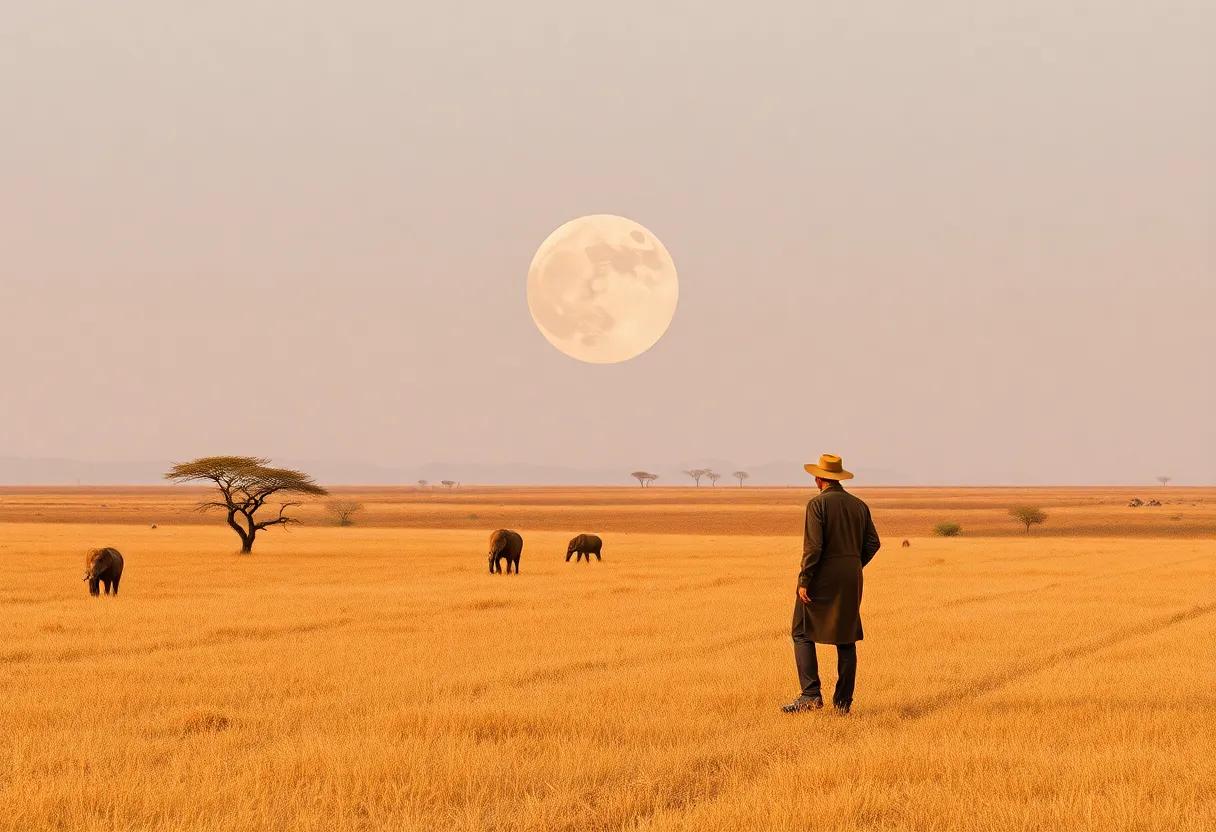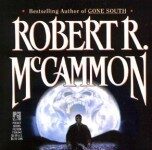In a literary landscape often crowded with new voices and fresh narratives, revisiting a timeless classic offers a rare opportunity for reflection and rediscovery. Out of Africa, the evocative memoir by Karen Blixen-writing under the pseudonym Isak Dinesen-has long enchanted readers with its lush depictions of colonial Kenya, layered personal insights, and poetic prose. invites us to engage once more with this storied text, peeling back its layers to explore not only its enduring appeal but also the complexities that lie beneath its romanticized veneer. This review embarks on that journey, navigating the memoir’s narrative landscapes and thematic depths with a balanced and thoughtful lens.
A Journey Through the Lush Landscapes and Vivid Descriptions That Bring Dinesen’s Africa to Life
With every turn of the page, Karen Blixen invites readers into a world where the African plains stretch endlessly beneath a boundless sky, and life pulses with raw vitality. Her rich, evocative prose paints scenes of morning mists weaving through ancient acacia trees, the fiery glow of sunsets that set the horizon aflame, and the tranquil yet untamed beauty that lingers both in wild landscapes and human connections. Through her keen observations and poetic sensibility,Africa is no longer a distant land but a living,breathing character in her memoir-complex,mysterious,and endlessly enchanting.
Her descriptions do more than merely depict physical beauty; they capture the rhythms and moods that shape existence on the savannah. From the haunting calls of lilac-breasted rollers to the solemn endurance of the majestic elephants, Dinesen’s narrative dances between intimate moments and grand vistas, illustrating a profound bond between nature and spirit.Key elements that define this vivid portrayal include:
- Immersive sensory detail: Sight, sound, and scent converge to immerse the reader in the African habitat.
- Poetic language: Lyrical metaphors and vivid imagery bring scenes to life with cinematic clarity.
- Cultural interplay: Subtle reflections on the intersection of settler and indigenous perspectives enrich the narrative.
| Element | Description | Impact |
|---|---|---|
| Landscape | Vast plains, towering acacias, sun-drenched horizons | Evokes awe and timelessness |
| Wildlife | Elephants, lions, vibrant birdlife | Connects man and nature in shared existence |
| Seasonal rhythms | Rain cycles, dry spells, blossoming life | Highlights the delicate balance of survival |
Exploring the Complex Portrayal of Colonial Life and Cultural Interactions in the Memoir
Isak Dinesen’s memoir offers a richly layered narrative that delves into the intricacies of colonial existence, transcending simplistic depictions to reveal a world brimming with contradictions and nuanced human encounters. Far from romanticizing the era, Dinesen presents colonial life as a tapestry woven with both beauty and hardship, showcasing the complexities of power, identity, and cultural exchange. Her prose captures the *ambivalence* inherent in these interactions, where admiration and respect for the native cultures coexist uneasily alongside the realities of colonial domination and separation.
Throughout the memoir, the delicate balance between connection and distance is illuminated through intimate vignettes that portray indigenous customs, relationships, and daily challenges. the cultural interplay is neither one-dimensional nor static; instead, it unfolds as a dynamic dialog shaped by mutual curiosity and misunderstanding. Key themes explored include:
- Reciprocity and Respect: Moments where Dinesen and the local people engage in shared traditions and exchanges.
- Language and Storytelling: The role of oral histories and vernacular in bridging cultural divides.
- Resilience amid Change: How both colonizers and natives adapt to shifting social landscapes.
| Aspect | Memoir’s Portrayal | Colonial Reality |
|---|---|---|
| Relationships | Interpersonal, complex, emotionally charged | frequently enough hierarchical, fraught with tension |
| Cultural Exchange | Mutual learning and shared experiences | Unequal power dynamics |
| Landscape | Evocative, almost a living character | Resource exploited and controlled |
The Enduring Themes of Solitude, adventure, and Connection to Nature Within the Narrative
Isak Dinesen’s memoir is a masterclass in weaving solitude, adventure, and nature into an intimate tapestry that captures the essence of human experience. Her retreat into the vastness of the African landscape is not just physical but deeply existential-a sanctuary where the soul confronts both its fears and desires. Solitude here is not loneliness; it is a profound dialogue with the self, inviting moments of reflection amidst the wild.The memoir portrays adventure not merely as escapades through untamed terrains but as a transformative journey that challenges conventional boundaries,urging readers to embrace uncertainty and find strength in vulnerability.
Nature, in dinesen’s narrative, is an omnipresent character, pulsing with life and mystery. The connection to the land and its creatures becomes a language of belonging and reverence.This relationship is beautifully distilled in the following tableau:
| Element | Symbolism | Impact on Narrative |
|---|---|---|
| Solitude | Inner clarity and resilience | Facilitates personal growth and introspection |
| Adventure | Freedom and revelation | Drives plot dynamics and emotional depth |
| Nature | Harmony and raw beauty | anchors setting and evokes sensory immersion |
Through these threads, Dinesen crafts a story that transcends time, inviting readers not only to voyage across continents but into the intricate landscapes of their own hearts.
How Dinesen’s Story Balances personal Reflection with Broader historical Contexts
Dinesen’s memoir uniquely intertwines intimate moments of personal reflection with the sweeping canvas of early 20th-century colonial africa. Through her vivid descriptions and contemplative observations, she invites readers to step into her world-one filled with poignant encounters, cultural exchanges, and the quiet beauty of the landscape. Yet, beneath the lyrical prose lies an acute awareness of the broader historical forces shaping her experience: the complexities of colonial rule, the tensions between indigenous communities and settlers, and the unavoidable transformations brought by modernization. This duality enriches the narrative, allowing readers to appreciate not only a personal journey but also the weight of history that surrounds it.
The memoir’s balance is further enhanced by Dinesen’s nuanced approach, offering neither a romanticized nor purely critical view but a layered perspective. She captures the paradoxes of her time through:
- Personal anecdotes that reveal her emotional landscape and evolving identity;
- Historical vignettes that place everyday life within the broader colonial framework;
- Observations on nature and culture that serve as metaphors for change and continuity.
this blending creates a textured historical mosaic, encouraging readers to engage deeply with not just one woman’s story, but with a pivotal era that continues to resonate.
The Role of Animal Symbolism and Wildlife Encounters in Enhancing the Memoir’s Emotional Depth
In Out of Africa, animals are far more than mere inhabitants of the African landscape; they serve as potent symbols weaving through Dinesen’s reflections, enriching the memoir’s emotional landscape. From the graceful elegance of the impalas to the imposing presence of the elephants, each creature mirrors facets of human experience-freedom, vulnerability, endurance. These wildlife encounters offer moments of poignancy and introspection, allowing readers to grasp the complexities of colonial Tanganyika not just through politics or geography, but through a visceral connection to nature’s rhythms and mysteries.
symbolism embodied in key animals:
- lions symbolize courage, sovereignty, and the wild unpredictability of life.
- Birds frequently enough evoke themes of freedom, escape, and transcendence.
- Elephants represent strength, memory, and deep familial bonds.
These themes unfold naturally through Dinesen’s vivid storytelling, where intimate wildlife encounters underscore her emotional states-joy, loss, wonder, and solitude. Beyond enriching the narrative’s texture, this interplay invites readers into a profound dialogue with the environment, blurring boundaries between human experience and animal existence, ultimately deepening the memoir’s universal resonance.
Narrative Techniques That Weave Memory, Myth, and Reality into a Timeless Literary Experience
In “Out of africa,” Karen Blixen masterfully blends memory and myth through a narrative texture that transcends simple memoir. Her prose unfolds like a tapestry where personal recollections are interlaced with African folklore, blurring the boundaries between what is remembered and what is imagined. This weaving creates an evocative atmosphere that captures the essence of a place and time, while also inviting readers to linger in the spaces between fact and fiction. The fluidity of her voice allows moments steeped in reality to shimmer with poetic grace, turning everyday encounters into timeless reflections on identity, belonging, and the ephemeral nature of existence.
The memoir’s narrative technique thrives on contrasts and subtle shifts,employing symbolism,layered storytelling, and vivid imagery to deepen its thematic resonance. by threading mythic elements throughout anecdotes, Blixen transforms personal history into a collective memory that resonates across cultures. Take, for instance, the way landscape descriptions serve as living characters-each savannah or river pulse with symbolic meaning, inviting readers into a world where memory’s emotional truth holds equal weight to objective fact.
- Layered Narrative: Memory and myth fold into one another,enriching the storytelling.
- Symbolic Landscape: Nature acts as a mirror reflecting the inner life of both author and land.
- Poetic Prose: Language elevates mere description,evoking mood and timelessness.
- Temporal Fluidity: The past and present intermingle, underscoring the memoir’s timeless appeal.
| Technique | Effect |
|---|---|
| Symbolism | Creates layers of meaning beyond literal events. |
| poetic Imagery | Transforms memory into an immersive sensory experience. |
| Mythic Allusion | Bridges cultural gaps, universalizing personal narrative. |
| Nonlinear Timeline | Reflects the fluid, fragmentary nature of memory itself. |
Why Rediscovering Out of Africa Offers Fresh Insights for Contemporary Readers and Travelers
In today’s fast-paced world, revisiting this classic memoir invites contemporary readers to engage with a narrative that transcends time and place.it offers a rare glimpse into a unique era when the harmony between human life and the african landscape was palpable and deeply felt. As modern travelers seek authenticity beyond bustling cities and crowded tourist spots, Delving into Dinesen’s evocative prose encourages a thoughtful reflection on our relationship with nature, culture, and history-something often lost amid constant digital distractions. The memoir’s richly woven tales remind us that travel is not merely about destinations but an intimate dialogue between the journey and the self.
Key takeaways for modern readers and explorers include:
- Rediscovering patience and presence in a world driven by instant gratification.
- Appreciating the symbiotic connection between people and their environment.
- Understanding colonial history through a nuanced, personal lens that challenges simple narratives.
- Embracing storytelling as a powerful tool to preserve cultural memory and inspire empathy.
| Aspect | Then | Now |
|---|---|---|
| Travel Motivation | Exploration & discovery | Connection & mindfulness |
| Relationship with Nature | Survival & respect | Conservation & awareness |
| Cultural Exchange | Personal anecdotes | Inclusive dialogues |
Practical Recommendations for Readers Seeking to Dive Deeper into Dinesen’s World and Era
To truly immerse yourself in Karen Blixen’s vivid portrayal of East Africa, consider exploring a mix of historical texts and creative works that paint a fuller picture of the era. Delve into books about early 20th-century colonial Kenya to understand the political and social backdrop of Blixen’s experiences. Pairing her memoir with photographic archives or documentaries focusing on the Maasai culture and colonial landscapes can deepen your sensory connection to the world she inhabited. For enthusiasts of literary context, supplement your reading with essays on Blixen’s narrative style and the themes of identity and displacement that ripple through her prose, enriching your appreciation for her layered storytelling.
Engage with the period on multiple levels by incorporating diverse resources into your study routine. Visit online forums or local book clubs dedicated to classic memoirs or African history to exchange insights and discover new perspectives. For an interactive approach, consider keeping a reading journal to track your reflections alongside historical timelines or influential figures connected to Blixen’s Kenya.
- Historical Background: “Kenya Colony and Protectorate” archives, available in digital libraries.
- Cultural Insights: documentaries on Maasai traditions and British colonial impact.
- Literary Analysis: Critical essays on Blixen’s narrative techniques.
- Interactive Learning: Membership in reading groups and participation in themed webinars.
| Resource Type | Recommended Titles/Platforms | Focus |
|---|---|---|
| Historical Texts | “The History of Kenya”, British Library Digital Collections | Colonial Kenya politics and society |
| Documentaries | “The Maasai: Guardians of the grasslands”, YouTube Channels | Indigenous culture and ecology |
| Literary Criticism | Journal of Scandinavian Studies, Literary hub | Narrative style and thematic exploration |
| Community Engagement | Goodreads Groups, Meetup Book Clubs | Discussion and diverse perspectives |
The Influence of Out of Africa on Modern Memoirs and Adventure Literature Across Genres
Out of Africa has cast an indelible shadow over the landscape of modern memoirs and adventure narratives, transcending its own genre boundaries to inspire writers and adventurers alike. The raw honesty and poetic reflections within Dinesen’s work have carved a path for authors who seek to blend personal experience with immersive storytelling. This legacy is evident in the way contemporary memoirists embrace rich settings and authentic voices, crafting tales that transport readers not just through places but through emotions and philosophies. The book’s subtle intertwining of the natural world with human vulnerability encourages a dialogue between the self and the environment, a motif that has become a cornerstone of many adventure stories that follow.
Across diverse genres, Out of Africa introduces enduring themes that resonate universally – exploration, identity, and the delicate balance between human ambition and nature’s vastness. Writers frequently enough incorporate:
- Thematic introspection inspired by Dinesen’s evocative prose.
- A focus on landscapes as both setting and character.
- An emphasis on cross-cultural encounters and personal change.
These elements have contributed to a greater narrative depth within adventure literature,transforming mere travel accounts into profound meditations on life. The table below illustrates how these core elements manifest across genres:
| Genre | Influence of Out of Africa | Example Elements |
|---|---|---|
| Travel Memoirs | Emotional engagement with place | Vivid descriptions,cultural immersion |
| Adventure Fiction | Human vs. nature dynamics | survival themes, introspective hero |
| Historical Narratives | Cross-cultural perspectives | Colonial settings, identity conflicts |
Capturing the Spirit of the Memoir through Cinematic Adaptations and Visual Storytelling
Bringing Isak Dinesen’s lyrical prose to the screen requires more than just a literal translation of her words; it demands a visual language that breathes life into the lustrous landscapes and the intimate, frequently enough elusive, emotions woven throughout her memoir. Cinematic adaptations harness the power of light, color, and framing to evoke the enchantment and melancholy that define her narrative. the sweeping vistas of Kenya’s highlands,captured in golden hues,become characters themselves-silent witnesses to moments of joy,loss,and transformation. Through meticulous attention to costume, setting, and pacing, filmmakers recreate not only the physical journey but also the spiritual odyssey that Dinesen so beautifully chronicles.
Visual storytelling also invites us to explore layers of meaning that words alone might only hint at, engaging our senses and emotions in new ways.The interplay of sound design, from the rustle of acacia leaves to the distant calls of exotic animals, immerses viewers fully in Dinesen’s world. Elements such as expressive close-ups and carefully orchestrated scenes of silence amplify the memoir’s themes of nostalgia, resilience, and belonging. This nuanced dialogue between image and narrative invites audiences to rediscover not just a place,but a deeply personal experience – one that lingers long after the credits roll.
- Evocative landscape cinematography mirrors the memoir’s poetic essence
- Soundscapes enrich emotional and cultural context
- Visual motifs reinforce themes of memory and identity
- Nonverbal storytelling reveals inner conflicts and growth
Exploring the Legacy and Life of Karen Blixen as the Mind Behind Out of Africa
Behind the evocative landscapes and poignant narratives of Out of africa lies the captivating life of Karen Blixen, a woman whose personal journey transcended the colonial African backdrop she so vividly described. Born into Danish aristocracy, Blixen’s adventurous spirit led her to Kenya where she not only managed a coffee plantation but also embraced the complexities of the land and its people. Her memoir is more than a travelogue; it is indeed a subtle tapestry woven with themes of love, loss, and identity, mirroring her own experiences in a land far removed from her European roots.
Her legacy isn’t confined to the pages of her writing but extends into cultural dialogues that continue to challenge and inspire readers today.Blixen’s distinctive voice captured the essence of a fading era, while her insightful observations reveal a profound empathy for the intertwined destinies of colonizers and the indigenous population. Key aspects of her life that shaped Out of africa include:
- Her aristocratic background: Provided a unique perspective on colonial life and social hierarchies.
- resilience and adaptability: Traits that helped her survive personal and financial hardships in Kenya.
- Close connection with local cultures: influenced the respectful tone she adopted in her storytelling.
| Aspect | Impact on Memoir |
|---|---|
| Marriage to Bror Blixen | Inspired reflections on partnership and loss |
| Coffee plantation management | Provided rich descriptions of African landscape and economy |
| Friendships with locals | Enhanced cultural nuance and emotional depth |
In revisiting Out of Africa through the thoughtful lens of , readers are invited to embark on a reflective voyage that bridges past and present. This exploration not only reawakens the vivid landscapes and complex emotions that define Dinesen’s narrative but also encourages a renewed appreciation for the memoir’s enduring resonance. Whether you are encountering Karen Blixen’s story anew or rekindling a long-held acquaintance, this journey reminds us that some stories, like the African horizon itself, remain timeless-inviting us to look deeper, feel more deeply, and carry their echoes forward.













